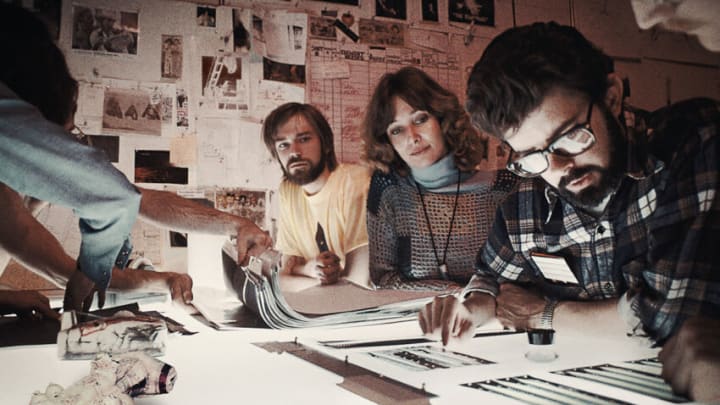Episode 2 of Light & Magic finishes the tale started in Episode 1 about the making of the original Star Wars, and it adds a much needed sense of pace to the documentary.
The episode starts off rather slowly, explaining George Lucas’ origins and how he got into film. While it’s a great origin story for the man who started it all, it grounds the sense of urgency of the first episode to a halt. This segment would be better placed in the first episode, as it is an important part of the story of ILM, but it’s misplaced here.
This origin story takes up a large chunk of the Light & Magic episode, until it catches up with the end of the first episode. While it does give some context to Lucas’ perspective, the audience didn’t need to hear all of the background beforehand. But what it highlights is how extremely stressful making Star Wars was, and the fact that they were probably conversations about it not happening.
This continues with a segment about the state of the rough cut. And it just further highlights the stressful state of the production of Star Wars – to paraphrase Steven Spielburg, it felt like a World War Two documentary because that’s all George had. Industrial Light and Magic was a huge mess. It’s also clear to see that rifts were forming with Lucas.
Once a system has been figured out, a flow for ILM takes place, where they are happy in their work, and Lucas can see what’s coming out. The music aids in this, with a happy flow in its tune. It’s calming.
The most interesting part of the second Light & Magic by far is the breakdown of the opening to A New Hope. The opening shot of the Rebel blockade runner being chased by an enormous Imperial Star Destroyer is perhaps one of the most well known in cinema history, and it was achieved with small modules. John Dykstra explains the subtle techniques that make the Star Destroyer huge, which makes all the difference to the audience. After this, rhythm established for both the company and the remainder of the episode. Everyone had a sense of family at ILM, working hard and playing harder.
Another aspect that resonates is the stop-motion chess board. This is a perfect example of problem based innovation, as Lucas had originally envisioned a human chess board but felt he couldn’t do it after Futureworld.
Finally, is the trench run. The most shocking bit to many audiences is that Fox wanted to cut the trench run. Thank the maker that Lucas fought to keep it in, else Star Wars would not be what it was without it.
Overall, while this episode takes some time to find its feat, once it gets into its flow (just like ILM), it becomes a lot more engaging, with the music elevating this feeling.
Follow Dork Side of the Force for all your Star Wars news, reviews, and more!
